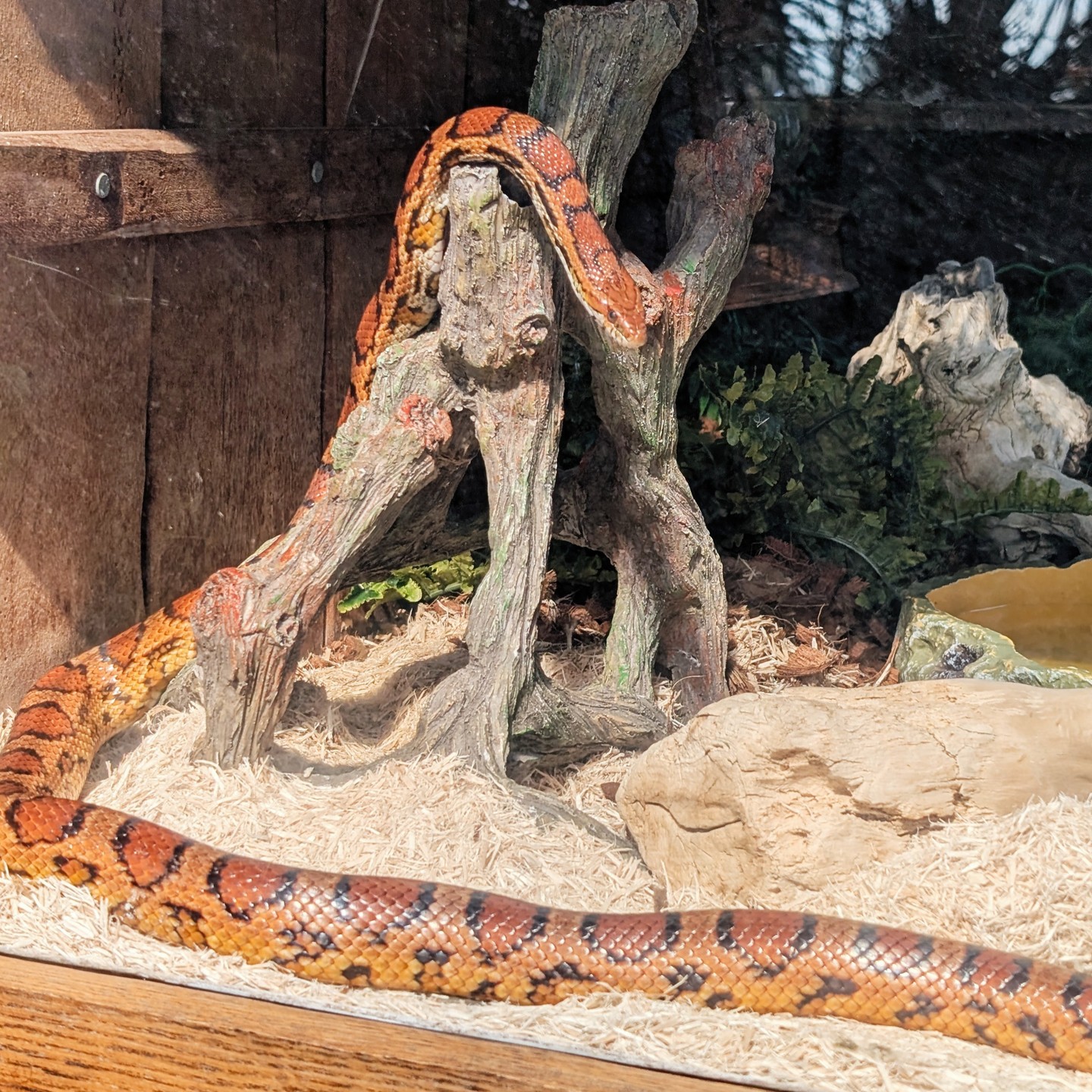- Corn Snake Characteristics and Identification: Explore the physical attributes, coloration, and patterns that make the corn snake a popular subject of interest.
- Behavior and Habitat: Understand the natural habits, environments, and behaviors that define the lifestyle of the corn snake.
- Human Interaction and Benefits: Learn about the interaction between corn snakes and humans and their role as pest controllers.
- Conservation and Care: Gain insights into conservation efforts and best practices for caring for corn snakes in captivity.
- Educational Value and Public Interest: Discover why corn snakes are a focal point in educational settings and zoos, heightening public awareness and interest.
The corn snake, scientifically known as Pantherophis guttatus, stands out among North American reptiles due to its striking appearance and docile nature. With a length ranging from 2.5 to 6 feet, these snakes are often identified by their beautiful patterns and vibrant coloration, typically showing shades of orange, red, brown, and yellow. Their smooth scales exhibit a distinctive pattern resembling Indian corn, which is how they received their common name. This characteristic not only aids in camouflage among fallen leaves and forest debris, making them adept at hiding from predators but also renders them a popular choice among reptile enthusiasts and collectors.
Inhabiting a range of environments, corn snakes are found primarily across the southeastern United States. Preferring warm, humid climates, they often reside in overgrown fields, forest clearings, barns, and abandoned buildings where they can hunt effectively. They are primarily diurnal, showing a high level of activity during dawn and dusk. Despite their reputation for adept climbing, corn snakes primarily hunt on the ground, utilizing a combination of stealth and speed to capture prey. Their diet mainly consists of rodents and reptiles, effectively controlling pest populations in their habitats. This behavior has earned them the reputation of being nature’s exterminators, crucial in maintaining ecosystem balance.
Interaction between humans and corn snakes dates back centuries. Historically, these snakes were kept around granaries where they hunted rodents, thus protecting stored grains. Their non-venomous nature makes them safe for humans to handle, leading to their popularity as pets. Snake enthusiasts favor corn snakes due to their calm demeanor and ease of care compared to other reptiles. In captivity, their diet is straightforward, typically consisting of appropriately sized mice. Although they require specific temperature and humidity conditions, advancements in herpetoculture have made it easier to establish a suitable home environment for these reptiles.
The conservation status of the corn snake is stable, classified as a species of least concern. Despite this, ongoing conservation efforts focus on preserving their natural habitats and ensuring healthy populations. Habitat destruction and the spread of invasive species pose threats to their environment, prompting initiatives to monitor population dynamics and protect critical areas. In educational settings, corn snakes serve as ambassadors, helping to foster an understanding of reptile ecology and conservation. Their presence in zoos and wildlife centers allows people of all ages to learn about snakes and their importance in the ecosystem, dispelling myths and eliminating unfounded fears.
Affectionately referred to as nature’s artwork, corn snakes are more than just visually captivating creatures. Their role in the ecosystem as pest controllers and their interactions with humans contribute significantly to their public appeal. These snakes are featured prominently in educational programs, where they aid in promoting reptile conservation and biodiversity. For educators and wildlife enthusiasts, corn snakes provide a bridge between humans and the natural world, paving the way for a deeper appreciation of wildlife and the environment. As both cherished pets and critical ecological participants, corn snakes showcase the rich complexity of nature’s interconnections and the enduring fascination they inspire in those who encounter them.
*****
Source Description
Meet the corn snake! 🐍✨ These friendly, non-venomous snakes are expert climbers and amazing pest controllers. Plus, their vibrant patterns make them true nature’s artwork! 🎨🦎

